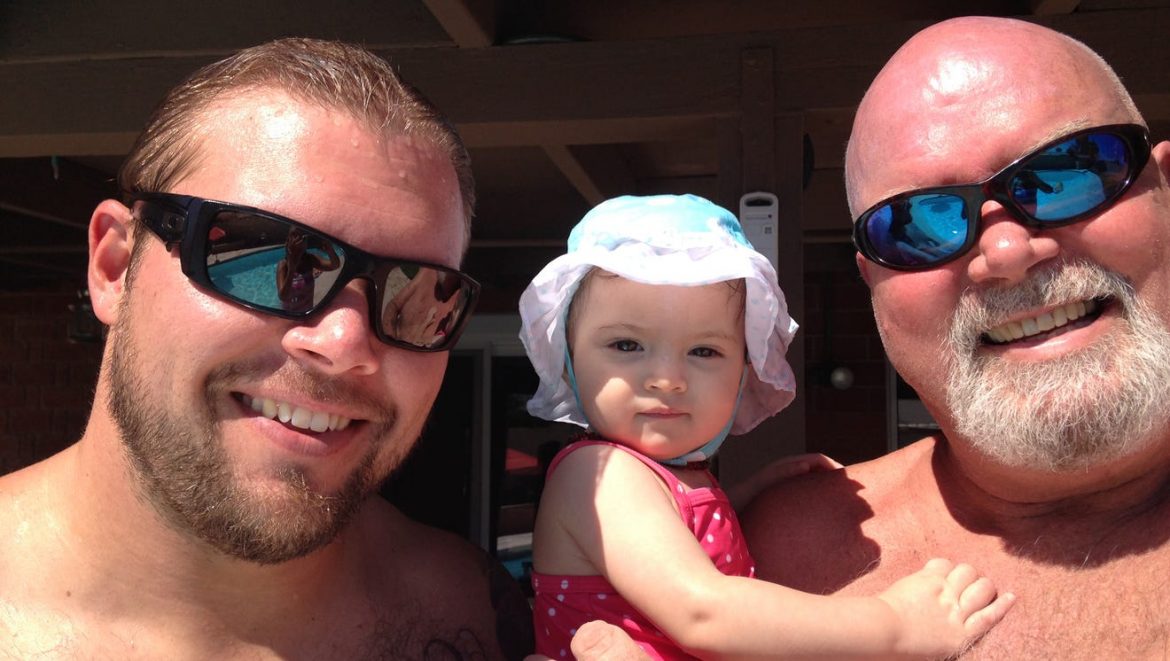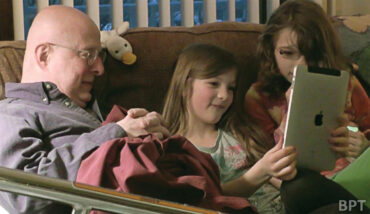Many people agree that it’s the people they encounter throughout their lives that really make it worth living. But can the people you meet in your final months truly have that much of an impact?
For many hospice patients, including Houston Hospice El Campo patient Bryan Caldwell, the answer to this is clearly “yes.” On a daily basis, he’s come to realize that choosing hospice is about much more than choosing the services it offers. It’s about the people who truly care and strive to make special moments happen for him.
Caldwell is a former NFL player, surfer and rancher who was diagnosed with Hodgkin’s Lymphoma shortly after celebrating his 50th birthday. When his disease became unresponsive to treatment, he sought the support of hospice in order to “keep moving and keep living each moment that comes along.” Since that decision, Caldwell’s hospice team and family have given him the strength and ability to do the things he loves, like fishing, gardening and raising birds.
Caldwell’s hospice team includes nurses, social workers and physicians to provide all of the medical expertise and support he needs. Other hospice team members can include health aides, trained volunteers, clergy, counselors, and speech, physical and occupational therapists.
For Caldwell – and many other patients – the hospice nurse is one of the most vital parts of the hospice experience. Caldwell’s nurse visits him each week and has become part of his hospice family. Nurses make routine visits to the patient’s home, making sure that pain and other distressing symptoms are well-managed and reporting back to the physician and other team members. Hospice nurses are available 24 hours a day, seven days a week, making them an accessible and important resource for the patient and family.
Social workers are another key ingredient to the hospice team. Caldwell’s social worker was able to reintroduce him to his hobby of raising pigeons. Social workers’ responsibilities can vary from patient to patient. They often help patients and family caregivers navigate a range of practical and financial matters, including information about insurance and health care decisions. Perhaps most importantly, they can coordinate activities for patients to help them stay involved in the things that are most important to them.
Another cornerstone of hospice care is involving the patient’s family. Hospices rely on family members as part of their care plan to increase the patient’s comfort and quality of life. Caldwell’s wife, Krista, is with him every day, and the hospice team supports her in caring for his needs and participating with him in what he calls his “timeless time.” In many cases, hospice organizations educate family members so they can be more comfortable caring for their loved ones. Being comfortable at home on hospice allows Caldwell to enjoy more time with the rest of his family, including his children, grandchildren and four dogs.
Hospice is often described as specialized medical care, but that is only part of the story. As Caldwell has experienced, it is often the people who provide this care that make hospice the best choice for getting the most out of life’s final moments.
To see more of Caldwell’s story called Finishing Strong, check out this article.
Related items
Hospice Care: Separating Fact From Fiction
(BPT) – In the living room, a grandfather laughs and plays video games with his granddaugh
What is Hospice Care?
Hospice programs are available to help terminally ill individuals live their remaining day






